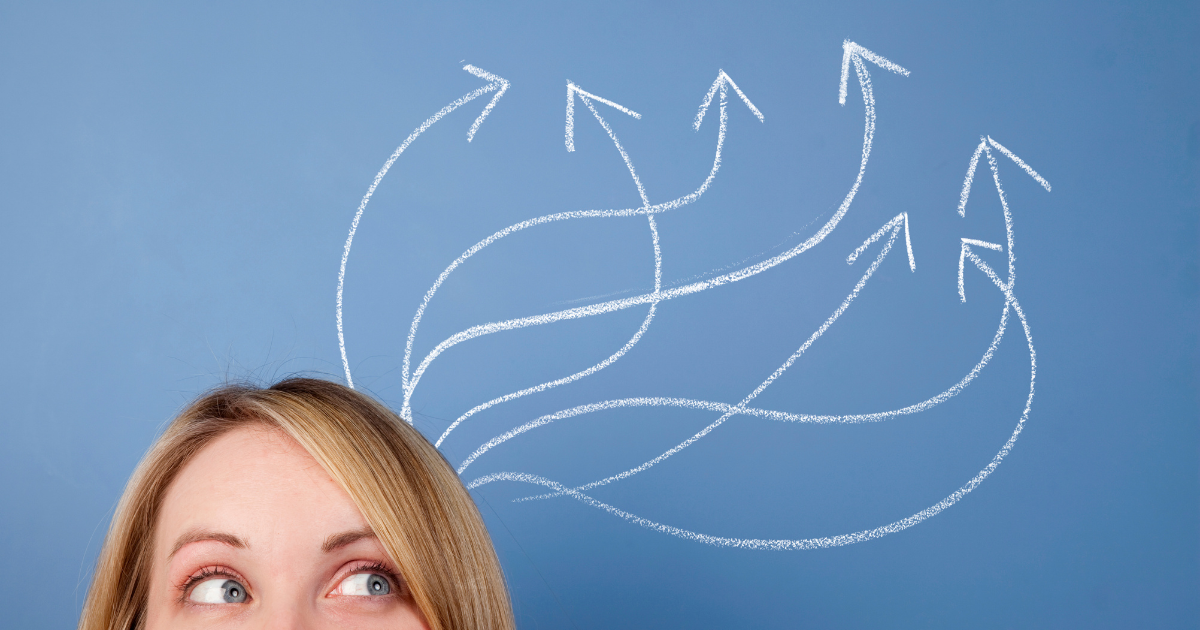For your marketing efforts to be effective, it helps to understand the forces that drive consumer behavior. People make buying decisions for a variety of reasons, from solving urgent problems to gratifying spur-of-the-moment whims. Marketers have identified several distinct categories for such decisions, including System 1 methodologies and System 2 decision-making processes. We’ll be exploring what these are and examining System 1 in some detail.

System 1 vs. System 2
In a nutshell, the difference between System 1 methodologies and System 2 decision-making has to do with speed. When people make decisions using System 1, they do not think too much. It is a quick and instinctive decision, as when someone grabs a candy bar strategically positioned near the cash register in a supermarket or convenience store.
System 2 is a slower and more deliberate process, often used for serious and costly purchases. People are more likely to use System 2 when considering a major purchase such as a home or vehicle or deciding where to attend college. However, even in these cases, System 1 factors come into play. When it comes to everyday purchases such as food, clothing, and entertainment, it is common for people to rely largely on fast and intuitive decision-making. That is why so much of the advertising industry and marketing techniques are based on the System 1 methodology.
Fast and Slow Thinking
The contrast between System 1 methodologies and System 2 decisions was popularized by a psychologist named Daniel Kahneman, whose book Fast and Slow Thinking has been extremely influential in the marketing industry. Kahneman, who won a Nobel prize in Economic Science, provides evidence that most buying decisions are made on autopilot rather than logically thought out.
Features of System 1
Economists, psychologists, and marketing experts alike have long observed that most consumers do not make buying decisions rationally. The converse of this, that buying decisions are made emotionally, is a little too simplistic. There are, in fact, a wide range of factors that contribute to “irrational consumption.” These include:
- Brand familiarity and loyalty. Given two choices, people often pick the one that’s more familiar. That is why many adults continue to buy candy bars, breakfast cereals, fast food dishes, and countless other items that they grew up with. It is also why supermarket shoppers often reach for a name brand product even if the generic brand lying right next to it is significantly cheaper.
- Current state or mood. There’s an old adage about not going grocery shopping when you are hungry. Hungry shoppers are more likely to reach for foods that provide quick energy, such as sweets and carbs, rather than more nutritious foods such as vegetables.
- Cognitive biases. Psychologists have identified various cognitive biases that often cause them to form incorrect conclusions. These can be personal or societal assumptions and prejudices that influence all areas of our life, including buying decisions. Some of the more common cognitive biases include confirmation bias, which causes you to favor evidence that supports what you already believe. Another that Daniel Kahneman studied is planning fallacy, the tendency to overestimate benefits and underestimate costs. The latter is often leveraged by advertisers, who obviously have a vested interest in getting customers to focus on benefits.
- Social factors. This is related to brand loyalty but is specifically based on the behavior of friends, family, and peer groups. Teens, for example, often buy running shoes, clothing, and accessories based on what their peers currently consider cool. Adults are not so different. If most of your friends have a certain type of smartphone or car, you are more likely to buy one. People often eat in restaurants and visit salons and even doctors and dentists (where, theoretically, decisions are more System 2-based) when they see their peers going to these places.
- Unconscious psychological factors. People’s preferences and attitudes are based partly on ingrained habits and experiences. This is difficult for marketers to tap into as these associations are very personal. For example, one person might prefer a blue item over a red one based on some long forgotten (at least consciously) childhood memory. People have different associations pertaining to certain colors, words, images, smells, tastes and other sensory data. One way that businesses address these issues is by offering customers as many options as possible, e.g., multiple colors, styles, flavors, etc.
How to Test and Measure System 1 Responses
Because System 1 methodologies are concerned with fast thinking and often based on instinctive, unconscious factors, it’s not always easy to tap into. People are often not even aware of what makes them choose the way they do. This makes it trickier and more subtle to predict how it will operate compared to the more logical System 2 responses. There are, however, ways to measure and leverage it.
With System 2, you can ask people what they prefer and why in surveys and interviews. For example, if you ask people what features they most value in a car they might respond with answers such as safety, reliability, and price. These rational reasons, however, might not actually be enough to motivate customers to buy a car. If you’re selling cars and want to understand people’s System 1 reactions, you have to be more creative. It would be more fruitful to show them images of different cars and ask them which ones they like best. Similarly, you can ask people to choose between different logos, colors, styles, layouts or whatever is relevant to your product. This type of testing is more akin to personality tests used in psychology than to traditional market research. The difference, of course, is that you’re not measuring personality traits but customer’s reactions to product or brand characteristics.
A simpler way to test System 1 responses is to use A/B or split testing, the kind commonly done by online marketers. The key here is to isolate the factors you’re measuring. For example, if you’re testing people’s reaction to color, keep everything else the same and test different colors. You can also test headlines, fonts, layouts, wording, images, and other variables this way. The nice thing about this is that you (or your customers) don’t have to know why they respond better to one variable or another; it’s sufficient to know that they do prefer one over the other.
System 1 is More Than Emotional Buying
Many marketers make the mistake of equating System 1 to emotional buying. While emotion is a significant aspect of System 1, it’s not quite that simple. People who react emotionally to an ad may still not buy your product if you don’t succeed at bridging emotions to your brand or product. We’ve all seen engaging and often beautifully produced TV commercials that aren’t related to the product they’re supposedly advertising. Huge companies such as McDonald’s, Nike, and Coke can get away with this because their brands are iconic household names. The average business, however, must directly connect emotions with the brand.
Remember to Leverage Both System 1 and System 2
While it’s useful to understand the difference between System 1 methodologies and System 2 decision-making, keep in mind that in real life the two overlap. Most people use both emotion and logic when making decisions. The best marketing campaigns, therefore, combine the two. Until fairly recently, however, many marketers were under the misconception that most consumer decisions were grounded in rationality. Thanks to the work of people such as Daniel Kahneman, we now know better.
We are a full-service research consulting firm that can help you gain a deeper understanding of your customers. For more information on using System 1 methodologies and System 2 decision-making, contact marketing research by New Perspectives today.


